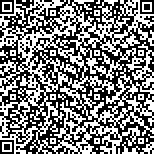下载中心
优秀审稿专家
优秀论文
相关链接
摘要

星载重轨干涉SAR卫星在高程测绘和形变测量中有着全天时全天候和大范围的优势,其中干涉基线是决定干涉性能的重要指标,而卫星重访轨道对干涉基线起着决定性的作用。通过对现有高分三号干涉数据轨道参数的分析,发现干涉基线相比国外先进卫星过长且稳定性有待提高。本文通过对相对轨道根数和机动控制的分析,得到满足重轨干涉SAR系统要求的稳定基线。以第一次观测的轨道为参考轨道,基于在摄动情况下重复观测轨道与参考轨道的相对轨道根数,计算得到重轨干涉基线的变化规律,并对不同纬度的观测目标进行了样例分析。在基线变化规律的基础上,利用机动速度和相对轨道根数的关系,进一步计算得到满足基线状态需求的机动控制方法。通过实际数据分析,给出了相对轨道根数变化对初始理想构型的影响,验证了重轨干涉基线变化规律符合本文的分析,并利用仿真样例给出了使得重轨干涉基线达到预期要求的机动控制方案。实际数据和仿真实验表明该模型能够通过可长时间观测并准确获得的轨道根数直接计算基线状态,并能从干涉基线需求出发,快速准确的得出对卫星的控制策略。
Spaceborne repeat-pass InSAR is suitable for various elevation surveying and deformation measurements under all weather conditions. A satellite's orbit is used to determine the interferometric baseline, which is an important index of interferometry performance. Result shows that the interferometric baseline of GF-3 satellite is longer than state-of-the-art repeat-pass InSAR systems overseas. However, its stability must be improved.
This study aims to obtain a stable baseline that satisfies the requirements of repeat pass InSAR systems by analyzing the relative orbit elements and maneuver control.
In this study, we use the first track of observation as the reference trajectory calculate the change law of repeat-pass baseline based on the relative orbit elements of repeated observations and reference orbits. Then, we analyze the baseline for targets under different latitudes. Based on the change law of baseline, we use the maneuver to adjust the relative orbit elements and develop a control method to achieve a baseline state.
A repeat-pass InSAR baseline motion model was established on the basis of relative orbital elements to obtain a precise relative orbit. Real data were used to verify the model. The cross-baseline error between real data and the model was less than 10 m when the update frequency of orbit parameters was 1 Hz. We calculated the maneuver quantities based on relative orbital elements and formulated a control strategy for a special baseline control task.
The change law of repeat pass InSAR baseline in global observation is analyzed, and the baseline length at different latitudes is obtained through the existing orbit control method, thus providing the basis for baselines when observing in different regions. The baseline length model is verified on the basis of actual data, and the actual baseline motion is determined in accordance with the model analysis. Then, an adjustment model based on the difference of relative orbital elements is established, and a control strategy from the predicted baseline to the required baseline is developed. Through the analysis of this study, the lengths of different observed baselines can be predicted with the number of known orbital elements, and the control strategy is adopted to adjust the observation baseline to satisfy the demand.

